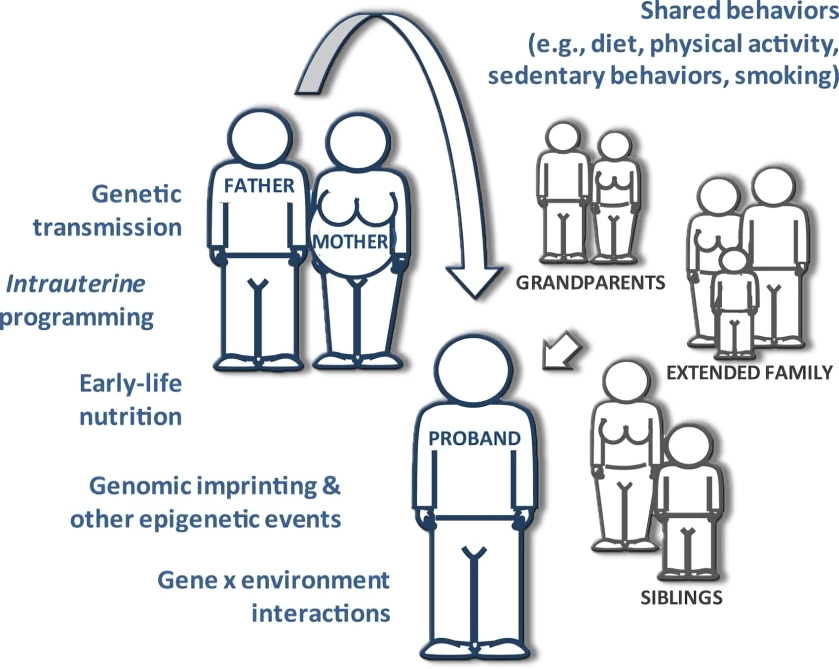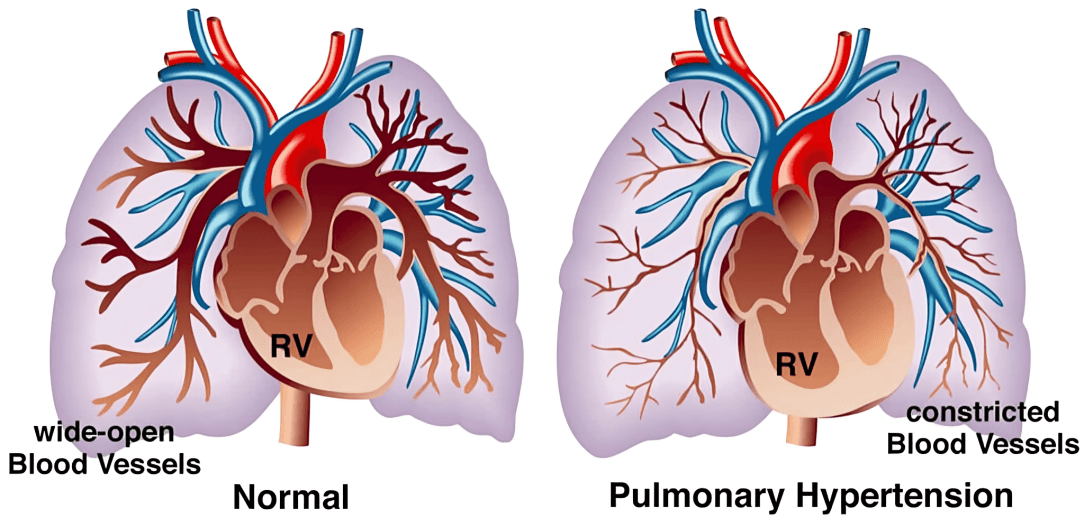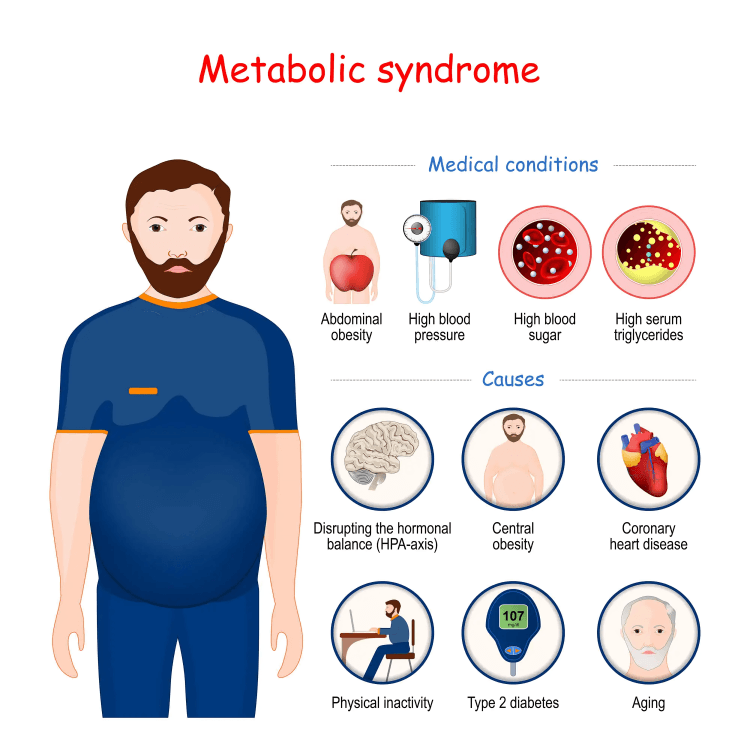
“
Metabolic syndrome is a group of risk factors that increase the likelihood of developing heart disease, stroke, and diabetes. Understanding the risk factors for metabolic syndrome is crucial in managing and preventing these serious health conditions. These risk factors often include high blood pressure, excess body fat around the waist, and abnormal cholesterol levels. Knowing the causes and prevention strategies can help you maintain better health and reduce the risk of long-term health problems.1
1
”
Excess belly fat, especially visceral fat, disrupts hormones, raises insulin resistance and inflammation, and increases the risk of metabolic syndrome, heart disease, and type 2 diabetes. 1
Lack of exercise causes weight gain, poor glucose control, and high blood pressure. Inactivity lowers insulin sensitivity, raising the risk of metabolic syndrome, heart problems, and overall metabolic dysfunction.2
Aging reduces muscle mass, metabolism, and insulin sensitivity, especially after 45. This age-related shift increases the chances of high blood pressure, poor cholesterol, and belly fat—key signs of metabolic syndrome.3

Family history plays a major role in metabolic syndrome. Individuals with a family history of diabetes, heart disease, or hypertension are at higher risk due to inherited traits affecting metabolism and fat distribution.
Certain ethnic groups, including Hispanic and South Asian populations, are more likely to develop insulin resistance and central obesity. These genetic factors increase vulnerability to metabolic syndrome. 4
A diet rich in added sugars, processed foods, and unhealthy fats raises triglycerides and reduces HDL cholesterol. This diet encourages insulin resistance and increases the likelihood of metabolic syndrome over time. 5

High blood pressure, particularly when untreated, damages blood vessels and forces the heart to work harder. It contributes to metabolic syndrome and increases risks of heart disease and stroke.
Low HDL cholesterol and high triglycerides increase fat accumulation in arteries. This imbalance in blood lipids is one of the diagnostic components of metabolic syndrome, contributing to a higher risk of heart disease. 6
Insulin resistance, where the body’s cells stop responding to insulin, forces the pancreas to work harder. This condition, often caused by obesity and poor lifestyle, is a key factor in developing metabolic syndrome.7
Sleep disorders, particularly sleep apnea, interfere with insulin regulation, raise blood pressure, and increase belly fat. These disruptions raise the risk of metabolic syndrome, especially in those with early warning signs. 8
PCOS is linked to insulin resistance and obesity. Hormonal imbalances in PCOS raise blood sugar and fat levels, increasing the risk of metabolic syndrome and related health complications in women. 9
Smoking worsens insulin resistance, raises inflammation and cholesterol, and promotes belly fat. Combined with a poor diet and inactivity, it significantly increases the risk of metabolic syndrome.10
Chronic stress increases cortisol levels, leading to weight gain, especially in the belly. Elevated cortisol disrupts blood sugar regulation, making individuals more vulnerable to insulin resistance and metabolic syndrome. 11
High LDL cholesterol, known as “bad” cholesterol, contributes to the buildup of plaque in arteries and increases heart disease risk. This imbalance is often found in individuals with metabolic syndrome. 12
Lack of sleep, particularly chronic sleep deprivation, negatively impacts insulin sensitivity and appetite regulation. These disruptions lead to increased fat storage and insulin resistance. 13
Being overweight or obese is a well-known risk factor for metabolic syndrome. Excess fat, especially around the abdomen, promotes insulin resistance and raises blood pressure. 14

Men typically develop metabolic syndrome at a younger age due to higher rates of abdominal obesity and hypertension. Postmenopause raises metabolic syndrome risk through weight gain and reduced insulin sensitivity.
Trans fats and saturated fats promote cholesterol imbalances and insulin resistance. These fats encourage fat buildup in arteries and contribute to abdominal obesity, both key factors in the onset of metabolic syndrome. 15
Living a sedentary lifestyle increases the risk of metabolic syndrome by reducing muscle mass and insulin sensitivity. Regular physical activity helps maintain healthy blood sugar levels and reduce the risk of metabolic syndrome. 16
Low socioeconomic status often correlates with limited access to safe places for exercise and healthcare. Social factors raise metabolic syndrome risk by encouraging poor diet and limited healthcare access.17


